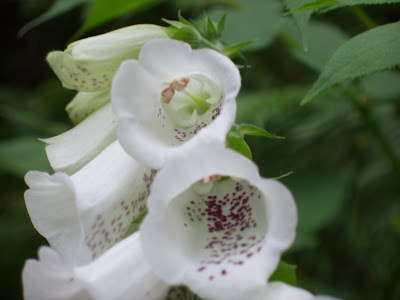
It started with a stick, a finely smoothed and varnished walking stick, knobby but (mostly) straight and (indisputably) strong, made and given to us years and years ago by the Finest of Friends, who said, This will lead you to the forest.
At long last this walking stick, and Karma the Beloved Dog (who insists upon being accompanied for all but the most impulsive of quests) led us to the Northwest Woods.
The Northwest Woods, like most forests, features, most prominently, trees (although it certainly is not limited to them). It is our opinion that each tree, like each person, has a story to tell. We have found that the trees in the Northwest Woods have been barely able to contain themselves, so eager are they to offer up their tales. Some days, in fact, it can appear as if the entire forest is babbling, and a person walking in the woods for a little peace and quiet might be well-advised to keep his or her eyes to the ground lest the trees infer there is a captive audience at hand (although just who in particular is more captive is certainly up for dispute, and may be a bit like the bad actor calling the tree wooden).
Now, where were we? Ah, in the Northwest Woods, of that we are certain, though our last paragraph does remind us that we tend to write quite like Karma the Beloved Dog tends to take a walk. There may (or may not, in our lesser moments) be a destination in mind, but certainly Karma (or evidently yours truly) does not make directly for it.
By the way, isn’t it curious that although one hears about making a “bee” line for somewhere, or references to “as the crow flies,” there is seldom reason to recommend advancing like a dog? It may be precisely because, well, advancing is such a dubious proposition when it comes to a dog. Instead, your average dog (and here we have Beloved Karma in mind, although he is most assuredly light years Above Average) will begin even his most coveted and dearly anticipated journey by proceeding in every possible direction, coming to complete standstills for no apparent reason, followed by retracing, reversing, and reinventing his itinerary at every point on his way to Straight Ahead.
Given our attachment to Karma the Beloved Dog, you will thus understand (and, we hope, forgive) the apparent confounding of our walking and writing styles. We do begin to resemble those we love, as we’re sure you have noted.
However, to return to the Northwest Woods, we would like to point out that apart from particularly Notable Characters of an Arboreal Nature, to whom you are shortly to be introduced, the Northwest Woods offers many other unexpected pleasures. We will leap right to them, forthwith, because journeys that begin on a pleasant note are rewards in themselves (as Karma himself so notably demonstrates at the onset of each walk with the jauntiness of his gait and his gaily lifted leg).
















































